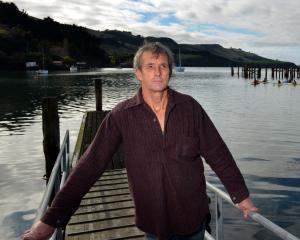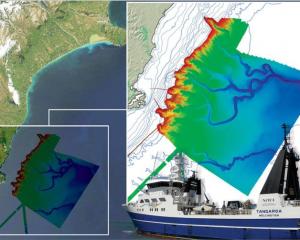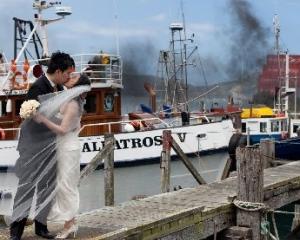
More than 80,000 juvenile salmon are being fed in tanks at the re-established Sawyers Bay salmon hatchery - the site of a former sewage treatment plant - in preparation for their release into Otago Harbour, hatchery co-ordinator Betty Mason-Palmer said.
Ms Mason-Palmer is among a group of about 10 volunteers at the hatchery who are involved with a project being run by the Dunedin Community Salmon Trust to re-establish a local salmon breeding programme to improve local stocks.
The volunteers recently released about 35,000 smolt into Otago Harbour and have been raising another batch of the salmon offspring, which they have hatched from eggs obtained from near Kaitangata as well as stocks from the Rangitata River in Canterbury.
The smolt are kept in two tanks at the hatchery, which respectively contain about 46,000 and 36,000 of the juvenile fish, Ms Mason-Palmer said.
The planned release of the young salmon, "in about a week's time or so", will be the third release project by the trust and the hatchery volunteers since the group established the hatchery site, she said.
Recent weather conditions had caused some "teething problems" for the juveniles, which are sensitive to warmer temperatures and dry conditions.
"The warm weather heats up the tank ponds and also affects our water supply. Salmon like it when things are wet," Ms Mason-Palmer said.
The water for the hatchery comes from a creek fed by an old reservoir above Sawyers Bay and Port Chalmers, but the supply could be disrupted in dry weather, she said.
Volunteer Roger Bartlett said the salmon hatchery project was "probably one of the only kind around which is supplied by a stormwater drain".
The trust and volunteers, mostly made up of salmon-fishing enthusiasts, wanted to boost stock numbers in Otago Harbour and had been buoyed by the success of other South Island hatcheries, he said.
However, Ms Mason-Palmer said the group did not have enough funding to implement measures to find out whether their efforts were making a difference to Otago Harbour salmon numbers.
"We don't fin clip or have any method of knowing whether our salmon are returning to the harbour. We largely rely on word of mouth among local fishers as to whether numbers are on the rise," she said.
Otago Harbour lacked any gravel-bed rivers feeding into it, which were the best natural habitat for returning salmon to spawn new juveniles, she said.





